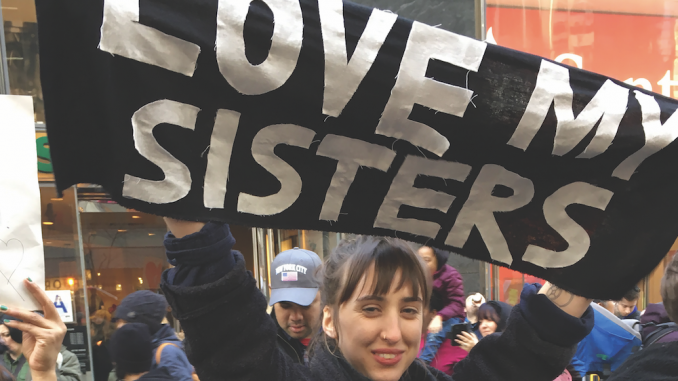
Although slow moving through the streets of Manhattan, the New York City Women’s March was a display of undying feminist integrity and determination to preserve the rights of women not only in America, but around the world as well.
A direct answer to President Donald Trump’s inauguration ceremony on Jan. 20, 673 sister marches stood in solidarity inspired by the Women’s March in Washington D.C. the very next day.
Thousands of pink “pussy hat” clad, clever sign wielding protestors chanted for equality and guaranteed rights of women, members of the LGBTQ+ community and refugees. According to numerous Manhattan marchers, the potential threat to gay marriage and abortion rights are the top fundamental freedoms protestors marched for. These impassioned men and women added up to a grand total of 500,000, gathering on 42nd Street in front of Grand Central Terminal to begin the march.
With over five million participants worldwide, including one million in Washington D.C., the Women’s March has been dubbed as the largest and most widely publicized demonstration in American history. In addition to more than 500 U.S. cities that held various sister marches, over 80 countries also joined in support of American women concerned for the future of their freedom and safety under the Trump administration.
According to The New York Times, Trump went “out of his way” to ignore the worldwide supported effort to make the voices of frustrated women heard by their new president. Days later, Trump went on to reinstate a law first instituted by President Reagan in 1984 that prohibits the U.S, government from funding nongovernmental organizations, many of which provide reproductive health options.
Typically evasive of disclosing his profession at politically charged events, SUNY New Paltz Political Science Professor Daniel Lipson held a sign at the New York City March which read, “Political Scientists for Democracy.”
“It sounds like such a broad statement, that I am for democracy,” Lipson said. “But this is where we are in America, basic fundamentals such as the essentials of democracy are threatened.”
Lipson attended the march with his wife, Doree Lipson and two kids, Benjamin Lipson, eight years old, and Naomi Lipson, four years old.
Although Lipson said that his wife was admittedly nervous to bring their kids to such a large protest, Lipson felt calm and enthusiastic to allow Benjamin and Naomi to witness history in the making at such a young age. The Lipson family sported various signs: “Love Trumps Hate,” “Resist Fear Assist Love,” and “Not My President #BooTrump.”
“Ben definitely pays lot of attention to politics, it may be because his dad is a political science professor and his mom likes to talk about politics, but he definitely has an inclination to it,” Lipson said. “According to my son, there is a lot of talk about Trump in the schoolyard and school bus.”
In attendance to the New York City march was SUNY New Paltz third-year public relations major Ailise Schendorf. Schendorf described the event as a powerful experience where the importance of solidarity among people from all walks of life became very apparent.
“For me, issues concerning LGBTQ+ rights hits home the most because it’s the only marginalized community I belong to, but I felt like it was more important than me,” she said. “It was marching for the right to be different, as well as showing the current administration that people care and will stand up for their beliefs because we outnumber a bigoted government.”
Organizers of the Women’s March ask supporters and activists to keep the passionate momentum of social reform alive by participating in their “10 Actions for the First 100 Days” campaign. The first action asks constituents to write postcards to their local representatives explaining their concerns and intention to keep fighting for their rights.
